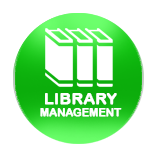
Library management software, also known as library automation software or library information system, is a specialized software solution designed to streamline and automate various tasks and processes in libraries. It offers comprehensive tools and features to assist librarians and library staff in efficiently managing library resources, cataloging, circulation, patron management, and overall library operations.
Key Features
- Cataloging and Resource Management :- Library management software provides tools to catalog and organize library resources such as books, journals, multimedia materials, e-books, and digital resources. It allows librarians to create detailed records with information such as titles, authors, subjects, publication details, and keywords. This feature helps in maintaining an accurate and easily searchable library catalog.
- Circulation Management :- The software automates the circulation process, enabling librarians to efficiently manage checkouts, returns, renewals, and holds. It provides features to track borrower information, issue library cards, and generate due date reminders. Circulation management features also handle fines and fees, making it easier to manage financial transactions related to library services.
- Patron Management :- Library management software includes features for managing patron information and interactions. It allows librarians to create and maintain patron profiles, track borrowing history, and manage user accounts. Additionally, it may provide self-service options for patrons, such as online catalog access and account management.
- Online Public Access Catalog (OPAC) :- OPAC is an essential component of library management software. It enables library users to search and access the library's collection remotely. OPAC features may include advanced search capabilities, filters, availability status, reviews, and recommendations. It enhances user experience and facilitates independent discovery of library resources.
- Acquisitions and Budget Management :- The software helps librarians manage the acquisition of new materials and track library budgets. It includes features for creating purchase orders, managing vendors, and tracking order status. It also provides tools for budget planning, expenditure tracking, and generating financial reports related to acquisitions and library resources.
- Reporting and Analytics :- Library management software offers robust reporting and analytics capabilities. It generates various reports on circulation statistics, resource utilization, overdue items, fines, and more. These reports help librarians assess library performance, make informed decisions, and optimize collection development and library services.
- Integration and Interoperability :- Library management software often integrates with other systems and services, such as digital repositories, online databases, interlibrary loan systems, and library consortia. Integration allows for seamless access to external resources and facilitates resource sharing and collaboration between libraries.
Benefits of Library Management Software:
- Improved Efficiency :- By automating time-consuming tasks, such as cataloging, circulation, and patron management, library management software enhances operational efficiency and enables librarians to focus on providing quality services and user assistance.
- Enhanced User Experience :- Library management software offers self-service options, online catalog access, and personalized recommendations, improving the user experience for library patrons. It facilitates easy searching, resource discovery, and remote access to library resources.
- Accurate and Accessible Catalog :- The software ensures accurate and up-to-date library cataloging, making it easier for users to find relevant resources. Advanced search options and filters enable users to locate materials based on specific criteria, enhancing the discoverability of library resources.
- Streamlined Acquisitions and Budget Management :- The software simplifies the process of acquiring new materials, managing vendors, and tracking library budgets. It helps librarians efficiently handle purchase orders, track expenses, and generate financial reports, optimizing resource allocation and budget planning.
- Data-Driven Decision Making :- Library management software provides valuable insights through reports and analytics. Librarians can analyze circulation trends, resource usage patterns, and patron behavior to make informed decisions regarding collection development, resource allocation, and service improvements.
